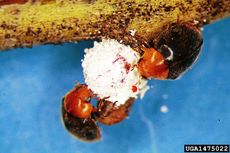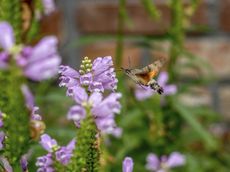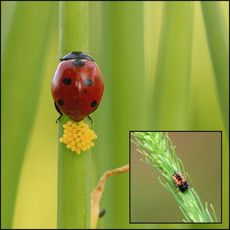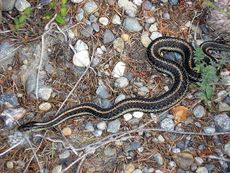Beneficial Garden Friends
There are many beneficial wildlife helpers in the garden. From natural predators that feed on pests and good garden bugs that pollinate plants to other garden friends likes frogs and birds, learning how to make your garden an inviting spot for them can help your garden flourish. In the following pages, you can find useful information on how to create garden friendly areas for beneficial insects and other garden friends. So keep reading to learn more about these wildlife helpers in the garden and how to take advantage of the benefits they offer.
Beneficial Garden Friends
-

How Beaver Habitats And Ponds Can Help Landscapes
Beavers are a beneficial part of a wildlife ecosystem. Here are tips on how to support them.
By Bonnie L. Grant
-

Butterfly Gardening - Using Butterfly Garden Plants
One of my favorite garden guests is the butterfly. Read this article to take a look at plants that attract butterflies so that you can welcome these flying beauties into your garden too.
By Stan V. Griep
-

Types Of Garden Spiders That Benefit Plants
Learn about garden spiders and how they play a part in keeping your garden free of pesky bugs.
By Susan Albert
-

Nematodes As Pest Control: Learn About Beneficial Entomopathogenic Nematodes
Entomopathogenic nematodes are rapidly gaining in popularity as a proven method of eradication of insect pests. But what are beneficial nematodes? Read here for more information.
By Amy Grant
-

Are Mealybug Destroyers Good: Learn About Beneficial Mealybug Destroyers
What is a mealybug destroyer and is it good for plants? Learn about mealybug destroyer beetles and how to tell them and mealybug pests apart here.
By Mary H. Dyer
-

How To Create A Backyard Bird Sanctuary
Important pollinators that add beauty and a sense of peace in the garden, here’s how to welcome wild birds.
By Amy Grant
-

Turn Your Backyard Into A Bee Sanctuary
It's easy to welcome bees to your garden space with plants, water and a safe habitat. Read on to learn how.
By Bonnie L. Grant
-

Stag Beetle Facts – Benefits Of Stag Beetles In The Garden
Stag beetles, with rather threatening-looking mandibles, actually pose no threat to humans or gardens. Learn about these friendly insects here.
By Bonnie L. Grant
-

Hedgehogs In Gardens: Tips On Attracting Hedgehogs To The Garden
Attracting hedgehogs to the garden starts with access, but there are also a few dangers to eliminate and things you can do to make them feel more invited. What will attract hedgehogs? Use the information in this article to attract hedgehogs to the garden.
By Bonnie L. Grant
-

Flowers That Attract Moths: Tips For Attracting Moths To Your Garden
Very little attention is paid to the declining moth populations. However, moth populations have been declining drastically here since the 1950s. Click this article to learn how you can help by attracting moths to your garden and providing them with safe habitats.
By Darcy Larum
-

Hope For Our Pollinators: Raise Easy-Care Nesting Bees In Your Backyard
By Caroline Bloomfield
-

Praying Mantis Information: How To Attract A Praying Mantis To The Garden
Most praying mantis information suggests their usefulness in the garden too, so attracting praying mantis can actually be beneficial. Learn more about these interesting creatures in this article.
By Nikki Tilley
-

Aphid Midge Life Cycle: Locating Aphid Midge Larvae And Eggs In Gardens
Many gardeners buy aphid midge eggs specifically to fight aphid populations. Find information in this article about the aphid midge life cycle and how to identify aphid midge young. Click here to learn more.
By Liz Baessler
-

Assassin Bug Identification – How Long Do Assassin Bug Eggs Take To Hatch
Recognizing assassin bugs as a good garden helper rather than a potentially scary threat to you puts a natural perspective on the normal cycle of life in your landscape. Learn more about assassin bug eggs and nymphs in this article.
By Bonnie L. Grant
-

Lacewing Larvae Habitat: Identifying Lacewing Insect Eggs And Larvae
Lacewing larvae in gardens are a natural knock-out for undesirable insects. They are voracious eaters of many soft-bodied insects that attack plants. For non-toxic pest control, create a lacewing larvae habitat. This article will help.
By Bonnie L. Grant
-

Ladybug Egg Information: What Do Ladybug Eggs Look Like
Because you want to encourage ladybugs in the garden, it's good to know what ladybug eggs look like as well as familiarize yourself with ladybug larvae identification so you don't accidently do away with one. This article can help.
By Amy Grant
-

Providing A Garden Snake Habitat - How To Attract Snakes In A Garden
They may seem scary at first, but most of the time finding a snake in a garden is a good thing. Read here to learn more about how to attract snakes to your garden and take advantage of what they can offer.
By Susan Patterson

